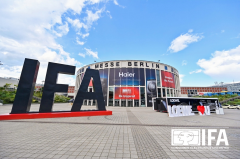HYQVIA [Immune Globulin Infusion 10% (Human) with Recombinant Human Hyaluronidase] is the First and Only Facilitated Subcutaneous Immunoglobulin (fSCIG) Approved in Japan for Agammaglobulinemia and Hypogammaglobulinemia
Administration of Recombinant Human Hyaluronidase Prior to Immunoglobulin Facilitates Subcutaneous Infusion of Larger Volumes, Potentially Reducing Frequency and Giving Patients More Flexibility
Approval Expands Takeda’s Portfolio of Differentiated Immunoglobulin Therapies and Reflects the Company’s Commitment to Bring High-Quality Plasma-Derived Therapies to Patients in Japan
OSAKA, Japan & CAMBRIDGE, Mass.--(BUSINESS WIRE)--Takeda (TSE:4502/NYSE:TAK) today announced that the Japanese Ministry of Health, Labour and Welfare has approved the use of HYQVIA® [Immune Globulin Infusion 10% (Human) with Recombinant Human Hyaluronidase] in patients with agammaglobulinemia or hypogammaglobulinemia1, disorders characterized by very low or absent levels of antibodies and an increased risk of serious recurring infection caused by primary immunodeficiency (PID) or secondary immunodeficiency (SID)2. The approval marks availability of the first and only facilitated subcutaneous immunoglobulin (fSCIG) therapy as a treatment option for appropriate patients in Japan.
HYQVIA is the first plasma-derived therapy for subcutaneous injection in Japan that consists of a combination of one vial of Immunoglobulin 10% and one vial of Recombinant Human Hyaluronidase PH20 (rHuPH20). The administration of rHuPH20 increases the dispersion and absorption of immunoglobulin (IG) in the subcutaneous tissue, allowing larger volumes to be infused in the infusion site. This allows for less frequent dosing compared to other subcutaneous IG products, while avoiding the need for venous access. The ability to infuse a larger infusion volume is expected to increase administration flexibility for patients with agammaglobulinemia or hypogammaglobulinemia by decreasing the dosing frequency to once every 3 or 4 weeks, as compared to weekly or bi-weekly with conventional SCIG treatments.
The approval is based on data from two pivotal Phase 3, open-label, non-controlled studies evaluating the efficacy, safety, tolerability and pharmacokinetics in Japanese subjects with PID (NCT05150340, NCT05513586). In these studies, the efficacy and safety profile of HYQVIA in 16 patients aged 2 years or older in Japan were evaluated based on the results of the clinical trials. The Geo Mean of IgG trough level at the last 3 visits was 9.494g/L and was maintained at level comparable to treatment with intravenous or subcutaneous immunoglobulin (Geo Mean of IgG trough level 9.624g/L). The major adverse reactions were pyrexia 5 patients (31.3%) and infusion site erythema, injection site erythema, infusion site swelling, infusion site pain, and headache (12.5%)1. Data from two Phase 3 clinical trials conducted in patients with PID in North America (NCT00814320, NCT01175213) was also included in the submission.
“We are delighted that HYQVIA, approved in more than 40 countries worldwide, has now been approved in Japan,” said Naoyoshi Hirota, Regional Head of Research & Development for Takeda’s Plasma-Derived Therapies Business Unit in Japan. “The subcutaneous IG therapies currently available in Japan for patients with agammaglobulinemia or hypogammaglobulinemia require infusion once every week or every 2 weeks. We are proud to offer Japanese patients the first and only facilitated subcutaneous treatment option that offers a reduced dosing frequency of every 3 or 4 weeks.”
“There is a high unmet need for plasma-derived therapies (PDTs) in patients in Japan, which is anticipated to increase as education and timely diagnosis rates continue to improve,” said Kristina Allikmets, head of research & development for Takeda’s Plasma-Derived Therapies Business Unit. “The approval of HYQVIA, the first and only facilitated SCIG treatment, is further evidence of Takeda’s commitment to add to the standard of care for patients in Japan. We look forward to continuing to bring new therapeutic options that support and enhance the experience of patients in our home country throughout the next decade.”
With this approval, Takeda is now able to offer a range of SCIG therapies to patients based on their individual administrative needs, reflecting the company’s commitment to offer patients in Japan a broader choice of treatment options. It also follows the announcement of a significant investment to build a new manufacturing facility for plasma-derived therapies (PDTs) in Osaka, Japan. HYQVIA is also currently under review in Japan for additional indications.
About Agammaglobulinemia or Hypogammaglobulinemia
Agammaglobulinemia is an inherited disorder caused by a gene defect that blocks the growth of normal, mature immune cells called B lymphocytes3. Hypogammaglobulinemia is a condition in which patients have low levels of antibodies due either to inherited genetic conditions (PID) or secondary effects (SID) – like chemotherapy, certain comorbid disorders, or immunosuppressants2. Individuals with any form of antibody deficiency frequently experience recurring and/or severe infections, and immunoglobulin replacement therapy can increase the level of antibodies in the body.
About Primary Immunodeficiency and Secondary Immunodeficiency
Primary immunodeficiency describes a heterogeneous group of more than 480 rare genetic diseases wherein part of the immune system is missing or not functioning properly4. Secondary immunodeficiency is defined as an acquired impairment of the immune response resulting from an underlying condition or factors extrinsic to the immune system. SID may occur as a consequence of malnutrition, metabolic disorders, use of immunosuppressive medications, chronic infections, malignancies, or severe trauma5. Due to their impaired immune system, patients with PID and SID may be more susceptible to infection, and it may take longer to recover from it. In patients with antibody deficiency and increased susceptibility and/or persistent infections, substitution with functional antibodies (immunoglobulin replacement therapy) is the standard of care to support the immune system's functioning5.
About HYQVIA®
HYQVIA is the combination product for subcutaneous injection containing one each vial of Subcutaneous Immunoglobulin 10% (SCIG10%) and Recombinant Human Hyaluronidase PH20 (rHuPH20). As of May 2024, HYQVIA has been approved in more than 40 countries worldwide.
HYQVIA Product Overview in Japan
|
Brand Name |
HYQVIA 10% Subcutaneous Injection Set 5g/50mL 10g/100mL 20g/200mL |
|
Generic Name |
pH4 Treated Acid Human Globulin (Subcutaneous Injection) Vorhyaluronidase Alfa (Genetical Recombination) |
|
Indications |
Agammaglobulinemia or Hypogammaglobulinemia |
|
Dosage and Administration
|
Human immunoglobulin G is administered subcutaneously at the same site within approximately 10 minutes after the subcutaneous injection of vorhyaluronidase alfa (genetical recombination). Initiate the treatment with human immunoglobulin G and vorhyaluronidase alfa (genetical recombination) at 1/3 or 1/4 of the doses described below, and then the doses are titrated up. Note that the dosing interval should be extended depending on the doses. •Usually, 150 – 600 mg (1.5 – 6 mL)/kg of body weight of human immunoglobulin G is administered once every 3 weeks or 200 – 800 mg (2 – 8 mL)/kg of body weight of human immunoglobulin G is administered once every 4 weeks. •Vorhyaluronidase alfa (genetical recombination) is administered at the dose of 80 units (0.5 mL) per 1 g of human immunoglobulin G. The dose and the number of doses per 3 or 4 weeks may be adjusted according to the patient’s condition. |







